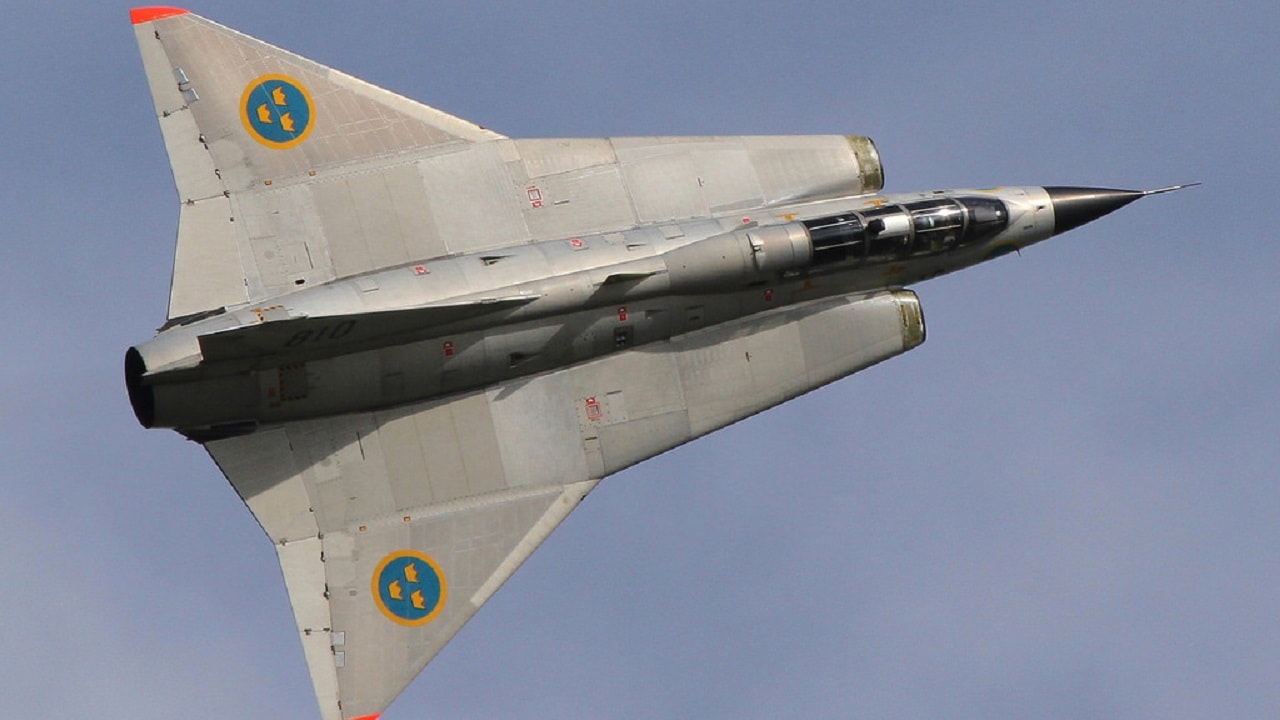The Saab 35 might not be as well known as say the F-22 or B-2 but was built with a clear purpose in mind – and a very different design: Following the Second World War, Sweden maintained a policy of neutrality – yet at the same time expected that if war came it would most likely be against the Soviet Union. The Swedish Air Force has foreseen the need for a jet fighter that could intercept bombers at high altitudes yet also be able to engage fighters.
The development of such an interceptor began soon after the Second World War, and it was a radical leap forward in aviation technology. Engineers at Saab had a radical idea for a new all-weather supersonic jet fighter, which was to become the Saab 35 Draken.
Aircraft engineer Erik Bratt, along with a team of more than 500 technicians, had arrived at the idea of a unique “double delta” wing shape after studying different ways of packaging the fuel and equipment. It was a radical design, and the Draken – which translates to “dragon” but was actually meant as “kite” for the shape of the wings – was the first aircraft to successfully employ the double delta wing design. Recognizable as the large, triangle-shaped wings that are widest at the rear and taper inwards closer to the nose of the plane, these offer numerous benefits.
The first is that delta wings have more internal volume for fuel than conventional wings, and can also be structurally stronger. The tradeoff is higher amounts of drag compared to typical swept-wing aircraft.
For Bratt and his team, the double delta design appeared promising, and after three years of intensive design study, the Saab-210 – a sub-scale test aircraft that was unofficially nicknamed “Lilldraken” or “little kite” – was first flown in 1952 to pioneer Saab’s still-unique double-delta wing form. Such scale prototypes were needed in the era before computer-aided design (CAD) and advanced flight simulations.’
Inventing the Cobra Maneuver
The first Saab-35A prototype finally took to the skies on October 25, 1955, and the J35A’s became the early production model. Because of the then-historically unproven tailless design, the aircraft experienced a number of problems at the start of its service life – including a number of super stalls.
However, pilots were trained to prevent that from happening, and out of the extensive pilot training came what is known as a “cobra maneuver,” where the plane flying at a moderate speed can abruptly raise its nose to a vertical and slightly past vertical attitude, momentarily stalling the plane, before making a full-body air brake and then dropping back to normal position.
It is now considered to be one of the most dramatic and demanding maneuvers but is typically only performed at air shows.
Countering the Soviets
During the Cold War, the Saab 35 proved to be an effective supersonic interceptor and capable dogfighter. It was one of the first Western European-built combat aircraft to exceed Mach 2 in level flight. The aircraft was adopted by the Swedish Air Force and was later exported to Finland, Austria, and Denmark.
The aircraft went through a series of upgrades, and in total 651 were produced. The final Saab 35 Draken, in service with the Austrian Air Force, was only retired in 2005 – a testament to its effective design and capabilities. While the aircraft never saw actual combat, it would have likely performed well in its interceptor role against Soviet bombers and more than held its own against the Soviet fighters of the era.
Now a Senior Editor for 1945, Peter Suciu is a Michigan-based writer who has contributed to more than four dozen magazines, newspapers and websites. He regularly writes about military hardware, and is the author of several books on military headgear including A Gallery of Military Headdress, which is available on Amazon.com. Peter is also a Contributing Writer for Forbes.

